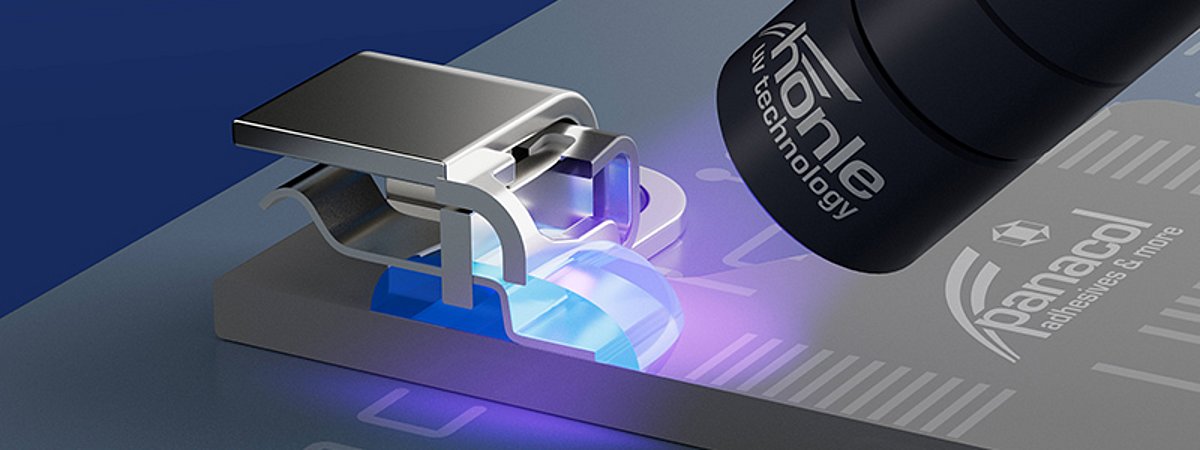Panacol: New dual-cure UV acrylic adhesives with high glass transition range

With Vitralit UD 8055 and Vitralit UD 8056, Panacol has expanded its portfolio of dual-curing acrylic adhesive systems. These adhesives cure primarily via UV crosslinking and have a secondary moisture post-cure for shadow areas.
A special characteristic of these two new adhesive systems from Panacol is the high glass transition range of over 100°C, which ensures high-strength bonds even under temperature stress. Vitralit UD 8055 and Vitralit UD 8056 are ideal for use as sensor encapsulation, encapsulation, component protection on PCBs, and for mixed bonding of plastics and metals where component undercuts or geometry-related cavities are present. This is precisely where they can show off their advantages: To ensure process-reliable curing even in shadow zones, both adhesive systems have been equipped with a secondary curing mechanism, downstream moisture post-curing. In the first step, the bonded areas in the component are cured and fixed in seconds by UV radiation. LED UV curing units with a wavelength of 405 nm are used here, for example, which do not require any warm-up phases and thus enable the shortest cycle times. Here, UV expert Hönle offers a unique selection of spot and area lamps that are optimally matched to Panacol's adhesives and can be individually adapted to the application requirements.
In the second step, uncured monomers are crosslinked in shadow areas by the humidity of the air without stress and without thermal exposure. This technology enables fast cycle times and high volume production without subjecting temperature-sensitive electronics or components to thermal stress. A high glass transition range (Tg) is especially important when encapsulations, joints, structural bonding or general bonding areas must withstand thermal stress over long periods of time. The Tg of Vitralit UD 8055 and Vitralit UD 8056 of over 100°C ensures that thermal expansion coefficients behave homogeneously in the application area. This prevents the adhesive from losing adhesion or immense stresses between components and adhesive from leading to delamination or cracking in the electronics. Vitralit UD 8055 and Vitralit UD 8056 were developed by Panacol primarily for the production of sensors, PCBs and flex PCBs in the field of electronics and automotive electronics. These components are usually designed for use up to 100°C, making acrylate systems with a Tg above 100°C the ideal solution for such applications. The high adhesion to common substrates such as FR4, PC and PBT and the deep through-curing of several millimeters allow a wide range of applications for these low-halogen adhesives. Vitralit UD 8055 in particular shows very reliable adhesive strengths on the above-mentioned substrates, even after 85/85 tests; Vitralit UD 8056 is particularly impressive for its performance on LCP and has successfully passed the UL 94 HB test.
